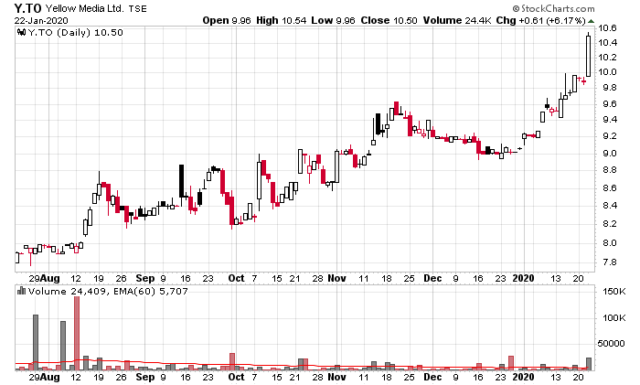(Part 1 on June 12, 2019; Part 2 on November 16, 2019)
Gran Colombia Gold (TSX: GCM) raised CAD$40 million in an equity offering priced at CAD$5.60 which included an additional 3-year warrant to purchase stock at CAD$6.50/share. The offering was initially announced on January 27, 2020 when the stock closed at CAD$5.74, so when you include the price of the warrant, it was a fairly steep discount. The stock was halted mid-day when they announced the offering and it surprisingly did not tank the stock (that day – there was about another hour of trading left when they re-opened the stock).
According to the January 27, 2020 release, “The net proceeds of the Private Placement will be used for general working capital and corporate purposes, including repurchases of the Company’s listed warrants (GCM.WT.B) under its normal course issuer bid.“, which continues the theme of selling stock to repurchase warrants (very confusing).
The reality is that I suspect the Marmato mine project is going to be really, really, really expensive and they just want to vacuum up as much cash as possible while the going is good, and gold remains at relatively elevated prices (although I will no profess to knowing whether gold’s existing US$1,574/ounce price is going higher, lower or staying steady, but it is under the per-ounce cash costs of their main Segovia mining operation). Shareholder value (let alone issuing a dividend) be damned!
What got my interest, however, is the decision made when the offering closed on February 6, 2020:
Gran Colombia also announced today that it will use a portion of the net proceeds of the Private Placement to redeem 30%, equivalent to US$19,162,500, of the aggregate principal amount outstanding of its 8.25% Senior Secured Gold-Linked Notes due 2024 (the “Gold Notes”) (TSX: GCM.NT.U) on March 31, 2020 (the “Redemption Date”), reducing the aggregate principal amount outstanding to US$44,712,500. The redemption price will be equal to 100% of the aggregate principal amount of the Gold Notes redeemed plus the Applicable Premium calculated in accordance with the provisions of the Gold Notes Indenture, currently estimated to be approximately 10%. Further details, including the actual amount of the Applicable Premium, will be announced later in March as it gets closer to the Redemption Date. The balance of the net proceeds of the Private Placement will be used for general working capital and corporate purposes, including potential repurchases of the Company’s listed warrants (GCM.WT.B) under its normal course issuer bid.
Considering that a non-trivial amount of my portfolio is in these notes, I took interest in this decision. They are using about CAD$28 million of the gross CAD$40 million in proceeds of the equity offering to close out some of these notes, which to my calculations, are effectively at a 16% coupon rate at current gold prices. A fairly good capital allocation decision if you ask me, although they easily have justification to retire the whole batch of notes if they wanted to!
The reason why they did what they did is simply because once the 30% of notes are redeemed, it releases security on Marmato – the notes will then only be secured by the Segovia mine operation. In light of its current production, I will be happy to continue collecting coupons and having the quarterly redemptions proceed until I get cashed out.
I have no position in GCM equity nor do I anticipate having any in the future.
Finally, this creates a capital allocation strategy issue for me in terms of where to re-deploy the cash. It really was happy earning a very low risk 16%, but sadly no longer.


